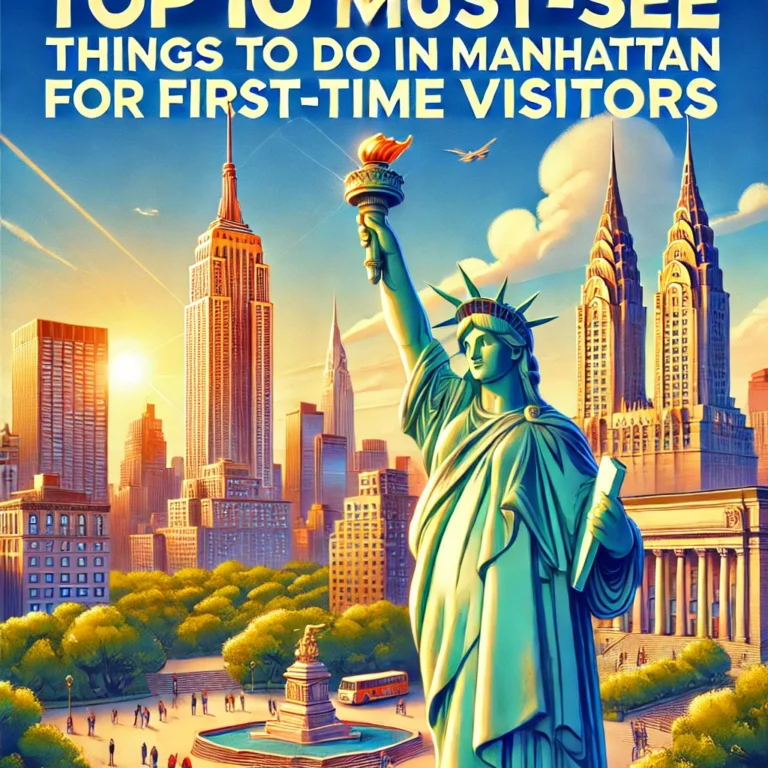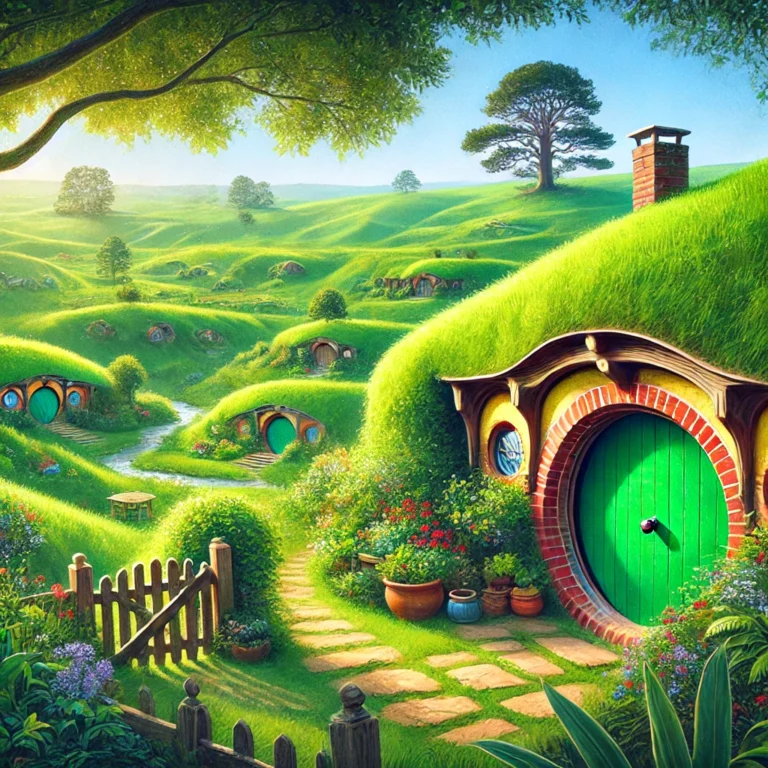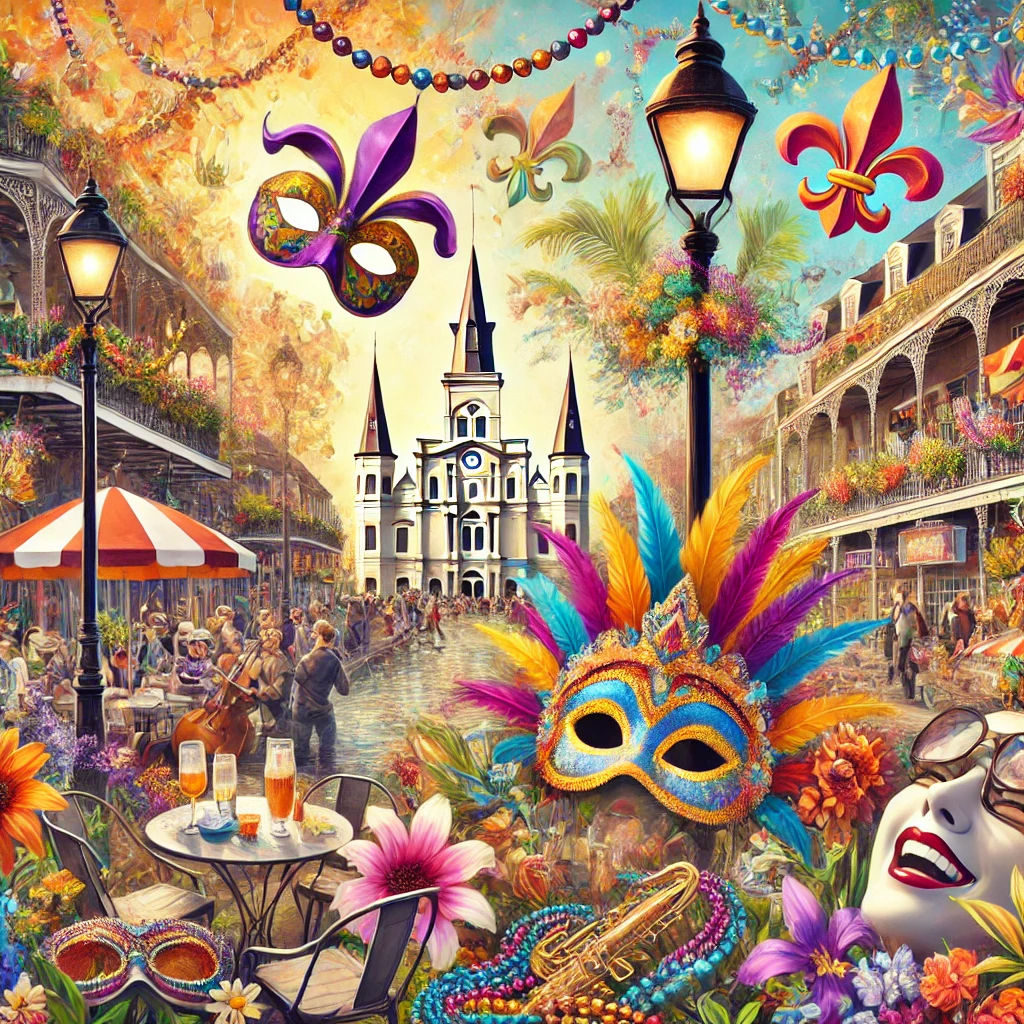
New Orleans is a city like no other—famous for its rich history, incredible food, vibrant festivals, and endless fun.
But when is the best time to visit New Orleans to experience everything the city has to offer?
Whether you’re looking to dive into Mardi Gras madness, indulge in the city’s renowned cuisine, or simply explore its unique culture, timing your trip right can make all the difference.
Let’s dive into the best seasons for festivals, food, and fun in New Orleans!
Best Time to Visit New Orleans for Festivals
New Orleans is home to some of the world’s most famous festivals, making it a prime destination for those who love culture, music, and unforgettable experiences.
Timing your visit to align with one of the city’s major festivals can offer a once-in-a-lifetime experience filled with parades, parties, and the city’s vibrant energy.
Here’s a breakdown of the best festivals in New Orleans and when to visit to enjoy them.
Mardi Gras (February or March)
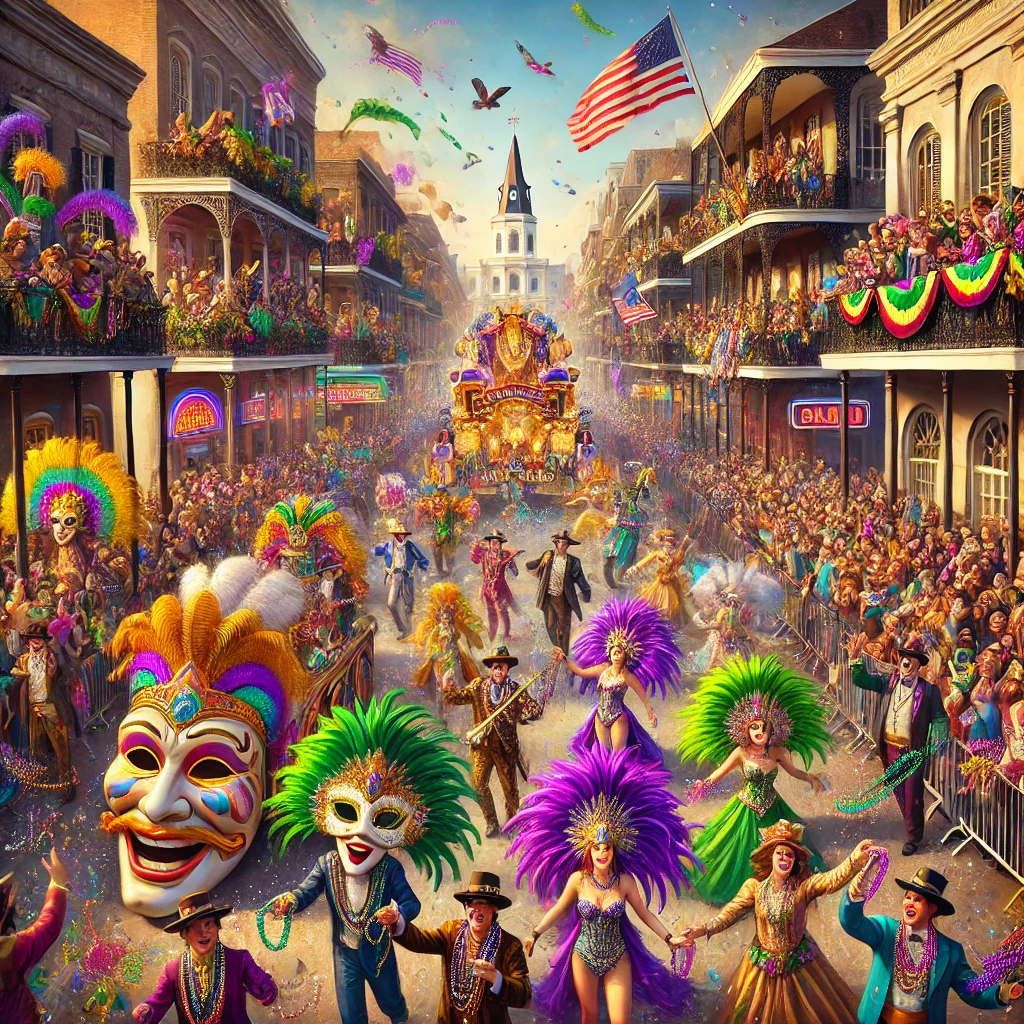
Mardi Gras is without a doubt the most famous festival in New Orleans and one of the largest celebrations in the world.
Taking place in late February or early March, Mardi Gras attracts millions of visitors who come to witness the lavish parades, colorful costumes, and endless parties.
The entire city becomes a playground for revelers, with streets lined with floats, marching bands, and beads flying through the air.
- What to Expect:
Mardi Gras in New Orleans is an explosion of energy. Parades are held throughout the city, with some of the most famous taking place on Bourbon Street and in the French Quarter. The Krewe of Zulu and the Krewe of Rex are two of the most iconic parades, known for their incredible floats and elaborate costumes. Expect non-stop parties, street performances, and lively music at every corner. - How to Prepare:
Book your accommodations well in advance as hotels tend to fill up quickly for Mardi Gras. Bring comfortable walking shoes, as you’ll be spending a lot of time on your feet, and pack light layers since the weather can fluctuate. Don’t forget to bring a bag for all the beads and throws you’ll catch during the parades! - Insider Tip:
If you’re looking for a more family-friendly experience, head to St. Charles Avenue, where the parades are a little less wild but just as entertaining. You’ll still get a front-row seat to the festivities without the intensity of the Bourbon Street scene. - Where to Stay:
- Hotel Monteleone: Located in the heart of the French Quarter, Hotel Monteleone offers a luxurious stay just steps away from the Mardi Gras parades and festivities. Its famous Carousel Bar is a must-visit for festival-goers looking to unwind.
[Book on Expedia] - Royal Sonesta New Orleans: Situated right on Bourbon Street, this upscale hotel offers the perfect base for those who want to be in the heart of the action. Enjoy elegant rooms and a lively atmosphere, perfect for Mardi Gras revelers.
[Book on Expedia]
- Hotel Monteleone: Located in the heart of the French Quarter, Hotel Monteleone offers a luxurious stay just steps away from the Mardi Gras parades and festivities. Its famous Carousel Bar is a must-visit for festival-goers looking to unwind.
Jazz & Heritage Festival (April/May)
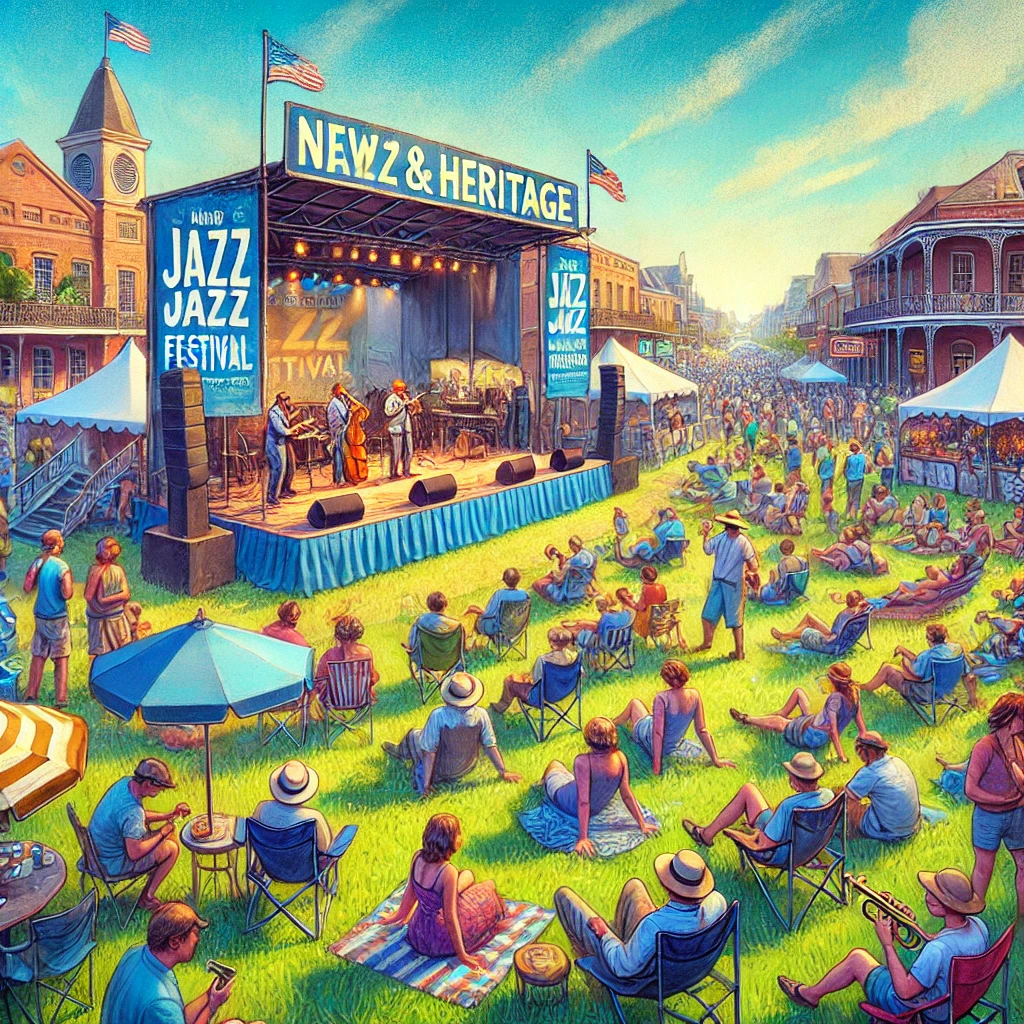
If you’re a music lover, visiting New Orleans during the New Orleans Jazz & Heritage Festival (commonly known as Jazz Fest) is an absolute must.
Held over two weekends in late April and early May, this festival celebrates the city’s deep musical roots and cultural heritage.
Jazz Fest brings together world-class musicians and local talent for performances that span multiple genres, including jazz, blues, rock, gospel, and more.
- What to Expect:
Jazz Fest is a vibrant celebration of both music and culture. The festival is held at the Fair Grounds Race Course, where you’ll find multiple stages with live performances happening simultaneously. In addition to the incredible music, Jazz Fest is also known for its diverse food offerings. Local vendors serve up traditional New Orleans dishes like po’boys, crawfish étouffée, and beignets—a food lover’s paradise! - How to Prepare:
Jazz Fest is an outdoor event, so be prepared for New Orleans’ unpredictable spring weather. Bring sunscreen, a hat, and comfortable shoes, as you’ll be moving between stages. Many attendees bring foldable chairs or blankets to relax on the grassy areas between sets. And don’t forget to bring cash for the amazing food vendors! - Insider Tip:
Plan ahead for the most popular performers. Jazz Fest often features big-name headliners like Stevie Wonder, Fleetwood Mac, or the Red Hot Chili Peppers, so check the schedule in advance and get to the stage early to secure a good spot. - Where to Stay:
- Le Pavillon Hotel: Known for its luxurious accommodations and historic charm, Le Pavillon Hotel is located just a short distance from the French Quarter and offers easy access to Jazz Fest venues.
[Book on Expedia] - The Roosevelt New Orleans: This Waldorf Astoria hotel combines elegance and comfort, making it an ideal choice for festival-goers looking for a more upscale stay. The hotel’s proximity to the Fair Grounds and downtown makes it a convenient base for your Jazz Fest adventures.
[Book on Expedia]
- Le Pavillon Hotel: Known for its luxurious accommodations and historic charm, Le Pavillon Hotel is located just a short distance from the French Quarter and offers easy access to Jazz Fest venues.
French Quarter Festival (April)
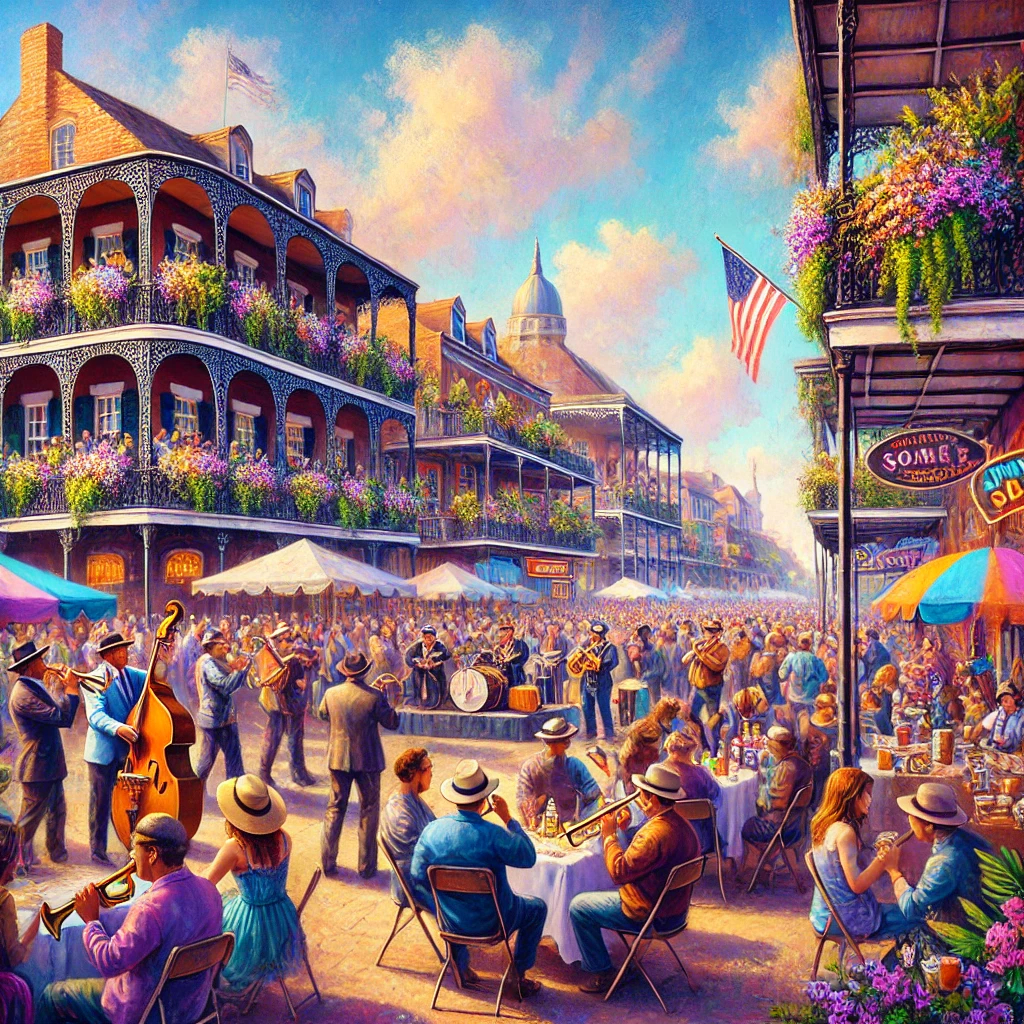
Held in the French Quarter every April, the French Quarter Festival is a local favorite that showcases the best of New Orleans’ music, food, and culture.
Known as the largest free music festival in the South, the French Quarter Festival offers live performances on multiple stages throughout the neighborhood, featuring genres like jazz, funk, R&B, and more.
Unlike Mardi Gras or Jazz Fest, the French Quarter Festival has a more laid-back vibe, making it perfect for travelers who want to enjoy the music scene without the huge crowds.
- What to Expect:
With dozens of stages set up across the French Quarter, you’ll have no shortage of entertainment options. The festival features over 1,500 local musicians, so you’ll get to hear authentic New Orleans sounds in the heart of the city. Food is a huge part of the French Quarter Festival, with over 60 booths offering local cuisine ranging from gumbo and jambalaya to Cajun shrimp and king cake. - How to Prepare:
Since this is a free event, no tickets are required, but it can get crowded, especially on weekends. Arrive early to grab a good spot near your favorite stage, and take advantage of the many nearby restaurants and bars if you need a break from the festival. - Insider Tip:
Don’t miss the Jackson Square area, where some of the best performances take place. Also, check out the smaller, more intimate stages for hidden gems and up-and-coming local talent. - Where to Stay:
- Bourbon Orleans Hotel: Located in the French Quarter, this hotel provides easy access to all the festival’s stages and activities. Enjoy the historical charm of the property, combined with modern amenities.
[Book on Expedia] - Omni Royal Orleans: Situated right in the heart of the French Quarter, this elegant hotel offers stunning views of the city and is just steps away from the French Quarter Festival’s main events.
[Book on Expedia]
- Bourbon Orleans Hotel: Located in the French Quarter, this hotel provides easy access to all the festival’s stages and activities. Enjoy the historical charm of the property, combined with modern amenities.
Voodoo Music + Arts Experience (October)
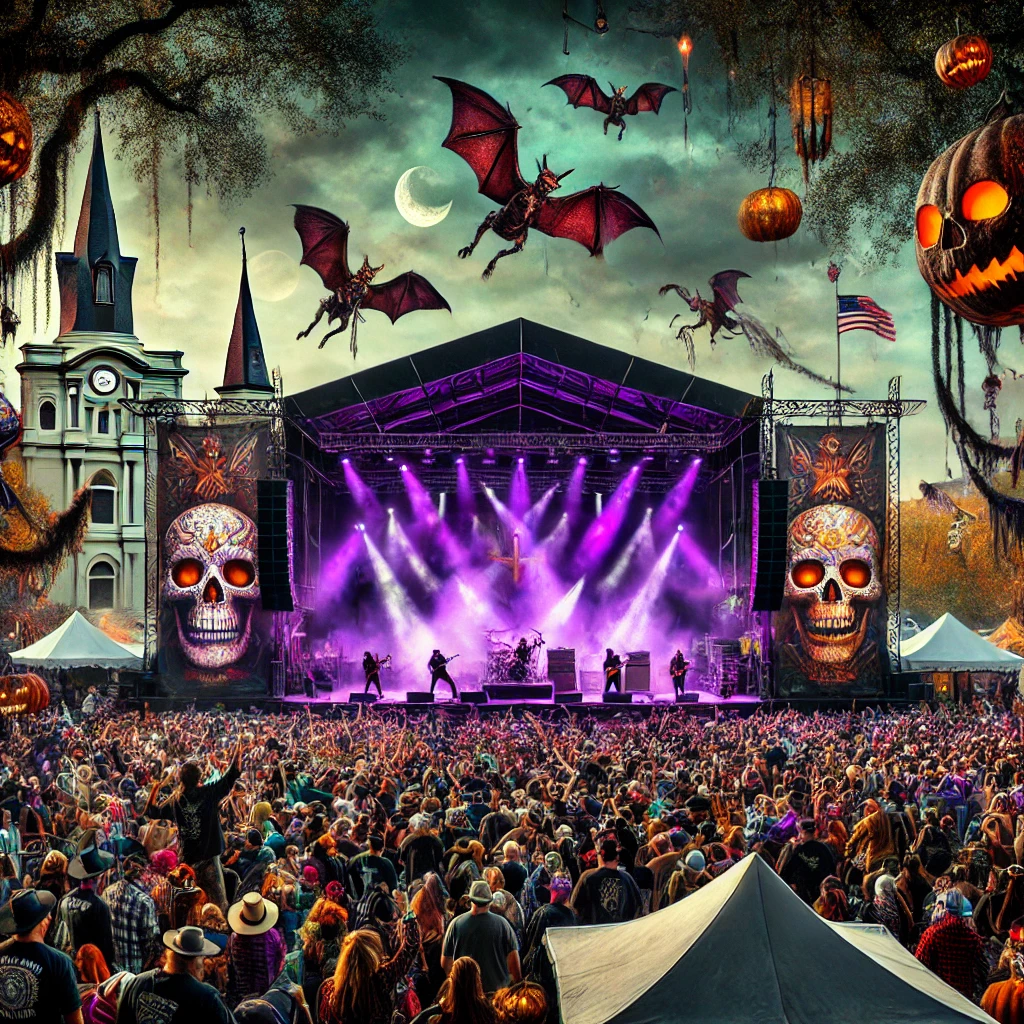
Held every October, the Voodoo Music + Arts Experience blends music, art, and Halloween fun into one thrilling weekend.
Taking place in City Park, this festival features a wide range of musical performances, from rock and hip-hop to electronic and alternative.
What sets Voodoo Fest apart is its mix of live music with interactive art installations and local food vendors, creating a truly immersive experience.
- What to Expect:
Voodoo Fest is known for its eclectic lineups, often featuring big-name artists alongside up-and-coming bands. Festival-goers are encouraged to wear costumes in honor of Halloween, adding to the festival’s spooky yet fun atmosphere. In addition to the music, there are art displays, craft vendors, and plenty of local food to sample. - How to Prepare:
October weather in New Orleans can be mild, but it’s always a good idea to bring layers as temperatures can dip in the evenings. Comfortable shoes are a must, as you’ll be walking between stages and through the large festival grounds. And don’t forget your costume! - Insider Tip:
Voodoo Fest’s after-parties are legendary. Check out local bars and venues for late-night performances by some of the festival’s artists. This is a great way to keep the party going after the main event wraps up each night. - Where to Stay:
- The Pontchartrain Hotel: Located in the Garden District, this stylish boutique hotel is a short drive from City Park and offers a cozy retreat after a day at Voodoo Fest.
[Book on Expedia] - The Ritz-Carlton, New Orleans: For those looking for a luxury stay, The Ritz-Carlton offers top-notch service, beautiful rooms, and a convenient location near both City Park and the French Quarter.
[Book on Expedia]
- The Pontchartrain Hotel: Located in the Garden District, this stylish boutique hotel is a short drive from City Park and offers a cozy retreat after a day at Voodoo Fest.
New Orleans offers festivals year-round, but the key is to choose the one that aligns with your interests, whether it’s music, food, or culture.
From the wild excitement of Mardi Gras to the laid-back vibes of the French Quarter Festival, the best time to visit New Orleans for festivals truly depends on what kind of experience you want to have.
Each festival offers its own unique slice of the city’s rich culture, ensuring that no matter when you visit, you’ll leave with unforgettable memories.
Pros and Cons of Visiting New Orleans by Season
The best time to visit New Orleans often depends on what you’re hoping to experience—whether it’s festivals, food, culture, or just a quieter trip to explore the city’s history.
Each season offers something unique, but it also comes with its own set of advantages and challenges.
Let’s break down the pros and cons of visiting New Orleans throughout the year, so you can choose the perfect time for your trip.
Spring (March – May)
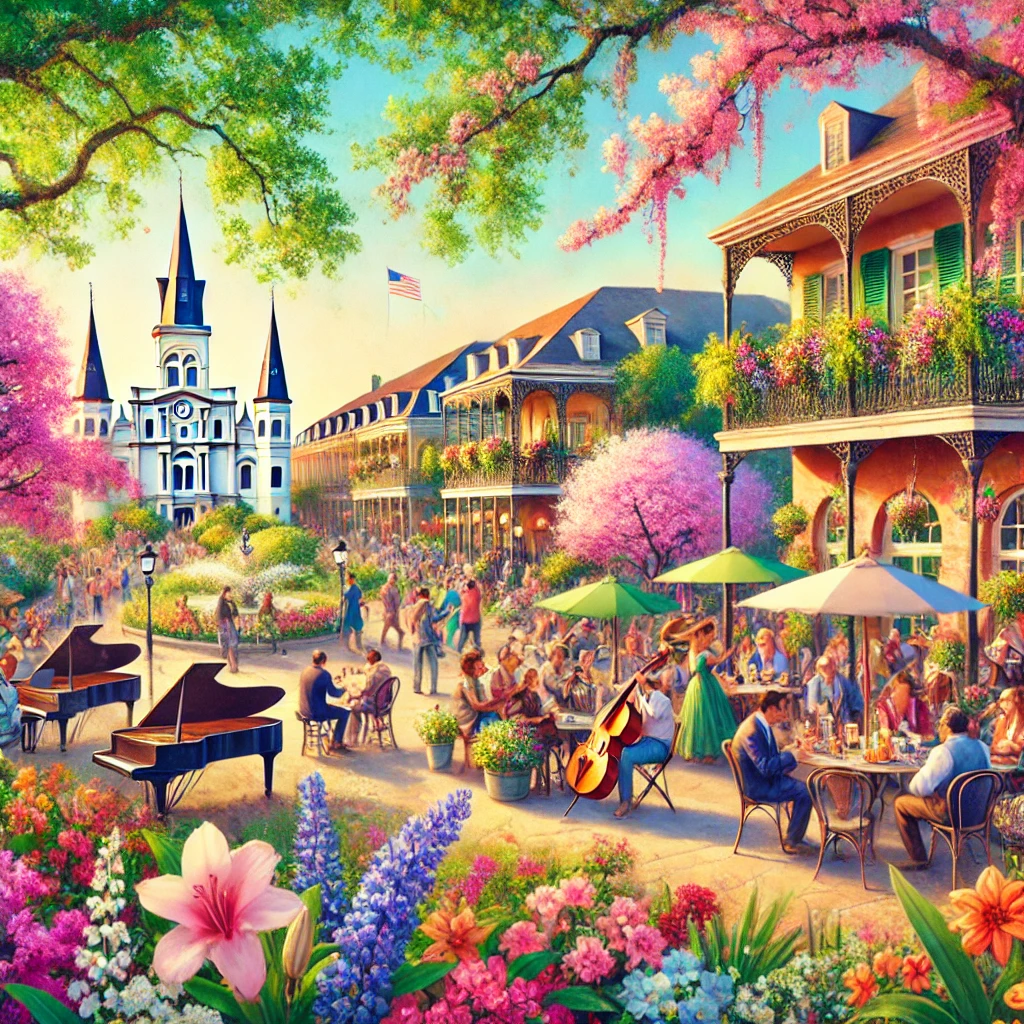
Pros:
- Perfect Weather: Springtime in New Orleans offers some of the best weather of the year. Temperatures are mild, typically ranging from the mid-60s to low 80s (°F), making it comfortable for walking tours, outdoor dining, and exploring the city’s many parks and gardens.
- Festivals Galore: Spring is peak festival season. In addition to Mardi Gras (if it falls in March), you’ll find major events like Jazz Fest, French Quarter Festival, and Tennessee Williams Literary Festival. These are fantastic opportunities to immerse yourself in New Orleans’ music, arts, and literary scenes.
- Beautiful Scenery: Spring brings lush greenery and blooming flowers, making it the perfect time to explore the city’s parks, such as Audubon Park and City Park. The iconic oak trees and vibrant azaleas are particularly stunning during this time.
Cons:
- High Prices and Crowds: The combination of ideal weather and numerous festivals means that spring is peak tourist season. Hotels, flights, and accommodations can be pricey, and you’ll find larger crowds in popular areas like the French Quarter and Bourbon Street. Be prepared to book months in advance if you plan to visit during events like Jazz Fest.
- Limited Availability: Accommodations, restaurants, and tours can fill up quickly during spring festivals, making it harder to secure last-minute bookings. Planning ahead is crucial if you want to attend the biggest events.
Summer (June – August)
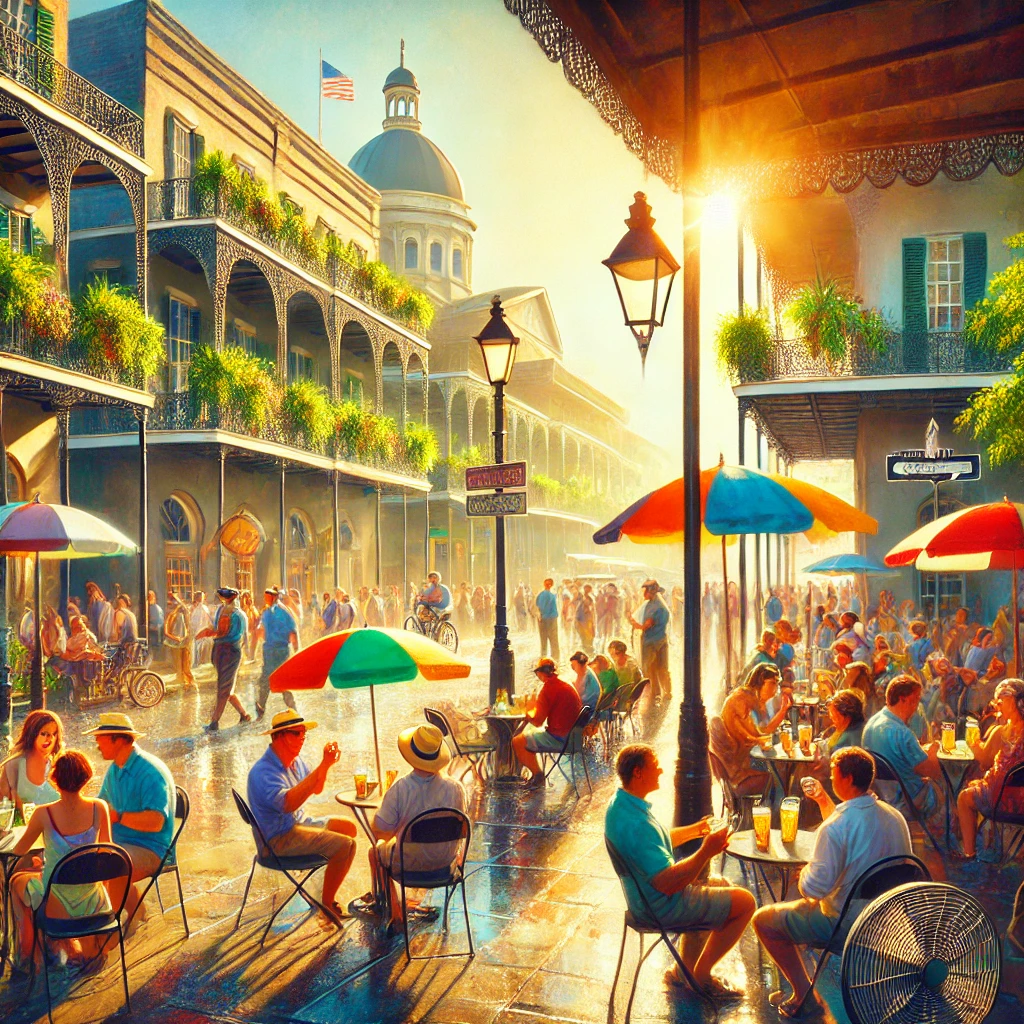
Pros:
- Lower Hotel Rates: Summer is considered the low season for tourism in New Orleans, meaning you’ll find cheaper hotel rates, flight deals, and even restaurant discounts. If you’re traveling on a budget, this can be an excellent time to visit.
- Fewer Crowds: With fewer tourists around, you’ll have the chance to explore popular attractions like Jackson Square, St. Louis Cathedral, and Frenchmen Street without the heavy crowds of spring. This can make for a more relaxed, leisurely experience.
- Indoor Attractions: While it’s hot outside, New Orleans has plenty of indoor attractions to keep you cool. Visit air-conditioned museums like the National WWII Museum, New Orleans Museum of Art, or enjoy live jazz at famous venues like Preservation Hall.
Cons:
- Hot and Humid Weather: Summer in New Orleans can be sweltering, with temperatures regularly reaching into the 90s (°F) and humidity levels that make it feel even hotter. Afternoon thunderstorms are also common, so you’ll need to be prepared for both heat and rain.
- Hurricane Season Begins: Hurricane season officially starts in June and lasts through November, with the highest risk during late summer. While hurricanes are rare, it’s something to keep in mind if you plan to visit during this time. Travel insurance can be a good idea in case of weather-related cancellations.
- Fewer Outdoor Events: Many of the major outdoor festivals wrap up by late spring, so you won’t find as many large-scale events during the summer. However, New Orleans still offers smaller music and cultural festivals to enjoy, such as Satchmo SummerFest in August, celebrating the life and music of Louis Armstrong.
Fall (September – November)
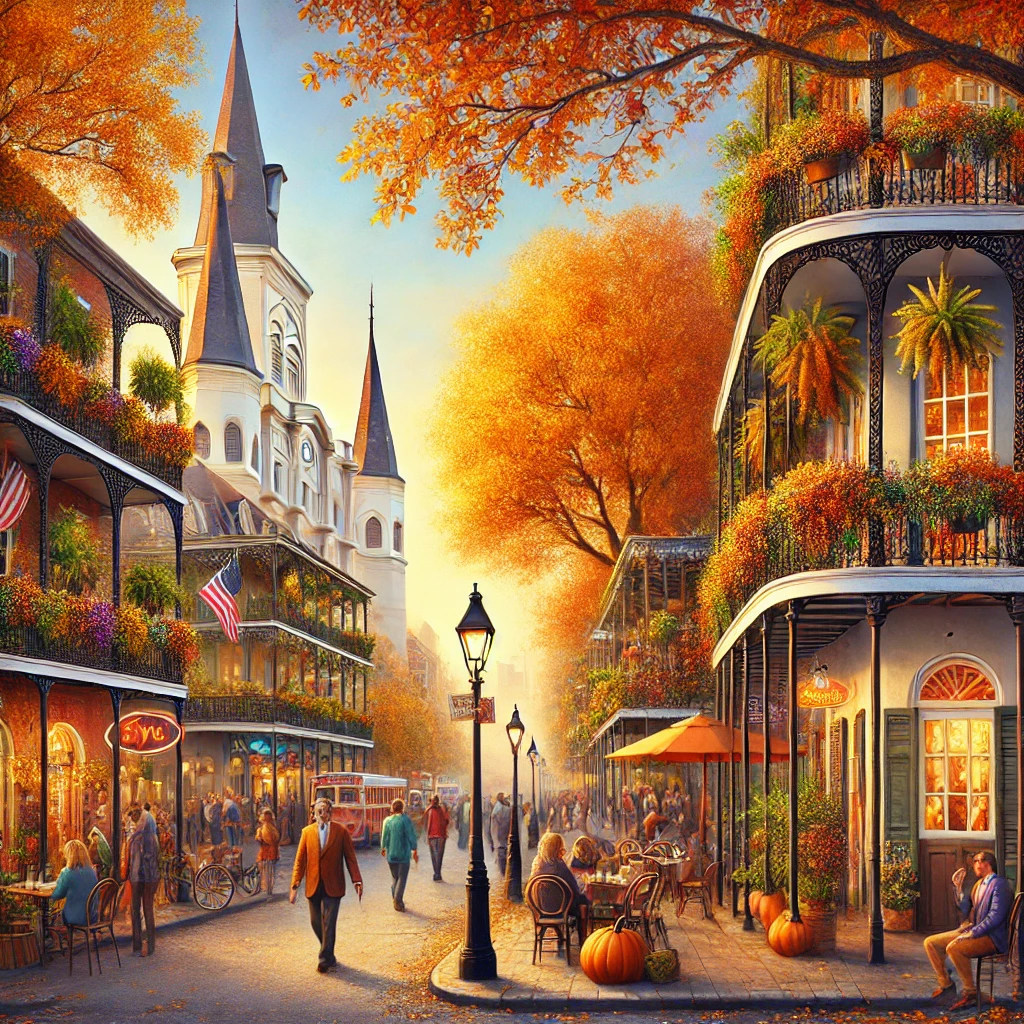
Pros:
- Cooler Temperatures: Fall brings a welcome relief from the summer heat, with average temperatures ranging from the 60s to 80s (°F). The pleasant weather makes it an ideal time for outdoor activities, such as exploring Garden District homes, enjoying a swamp tour, or strolling through the New Orleans Botanical Garden.
- Fewer Crowds: Fall is shoulder season in New Orleans, meaning fewer tourists compared to the spring. You’ll enjoy shorter lines at restaurants, easier access to tours, and more flexibility with hotel bookings.
- Festivals and Cultural Events: While not as packed with festivals as the spring, fall still offers notable events like the Voodoo Music + Arts Experience in October, Krewe of Boo (the city’s Halloween parade), and Oktoberfest. You’ll also find smaller food festivals and art events that highlight New Orleans’ vibrant cultural scene.
Cons:
- Unpredictable Weather: While fall temperatures are cooler, this is still part of hurricane season, which lasts until November. Weather can be unpredictable, with potential storms or heavy rains. Checking the forecast and having a flexible travel plan is essential.
- Limited Festival Variety: Although fall has some excellent festivals, it doesn’t offer the same volume or variety as spring. If your primary goal is to experience New Orleans’ legendary festival scene, you might find the options slightly more limited in the fall.
Winter (December – February)

Pros:
- Festive Atmosphere: Winter brings the holiday season to New Orleans, where the city comes alive with decorations, lights, and special events. Christmas New Orleans Style features holiday concerts, tree lightings, and beautiful decorations throughout the French Quarter. New Year’s Eve in Jackson Square is a lively affair with fireworks over the Mississippi River.
- Mardi Gras Build-Up: Depending on when Mardi Gras falls, the winter months are a great time to visit if you want to experience the festivities without the massive crowds. Early-season Mardi Gras parades, which often start in late January or early February, allow you to enjoy the carnival spirit in a more laid-back setting.
- Cooler Temperatures: New Orleans has mild winters, with temperatures averaging between the 40s and 60s (°F). It’s cool enough to wear layers, but still comfortable for walking tours and outdoor exploration. Winter is an excellent time for visiting indoor attractions or taking scenic streetcar rides through the city.
Cons:
- Colder Weather: While winters in New Orleans are mild, temperatures can sometimes dip into the 30s and 40s (°F), especially at night. If you’re looking for warm weather, winter may not be the ideal time to visit, but it’s great for those who prefer cooler conditions.
- Higher Prices for Mardi Gras: If your trip coincides with Mardi Gras (typically in February), hotel prices and airfare can skyrocket due to the influx of visitors. If you want to experience the full excitement of Mardi Gras, expect to pay premium prices, and be sure to book months in advance.
- Fewer Outdoor Festivals: Besides Mardi Gras, winter tends to have fewer outdoor festivals compared to other times of the year. However, you can still enjoy unique cultural events like Reveillon Dinners, where local restaurants serve traditional Creole Christmas meals.
Which Season Is Right for You?
- If you love festivals and don’t mind crowds and higher prices, visit during the spring to experience iconic events like Mardi Gras and Jazz Fest.
- If you’re looking for budget-friendly options and don’t mind the heat, summer offers lower rates and fewer crowds, though be prepared for the humidity and potential rain.
- For milder weather and a more relaxed atmosphere, fall is perfect for exploring the city without the bustling crowds, and you’ll still catch a few unique festivals.
- If you want a festive holiday experience or early Mardi Gras celebrations, winter is ideal for those seeking cooler temperatures and holiday cheer, but be mindful of higher prices around Mardi Gras.
No matter when you visit New Orleans, the city’s rich culture, mouth-watering food, and lively music will make for an unforgettable experience.
Choose the season that best fits your travel style and enjoy all that this one-of-a-kind destination has to offer!
Conclusion
No matter when you visit New Orleans, there’s always something exciting happening!
From lively festivals to unforgettable food, each season offers something unique.
The best time to visit New Orleans really depends on what you’re looking for, but rest assured—you’ll be swept up in the city’s vibrant spirit no matter when you arrive.
Ready to book your trip? Start planning now and make your New Orleans experience unforgettable!
Frequently Asked Questions (FAQs)
What is the best time to visit New Orleans for good weather?
Spring (March to May) and fall (September to November) offer the best weather with mild temperatures and fewer chances of rain.
How far in advance should I book my hotel for Mardi Gras?
It’s best to book your hotel at least 6 to 12 months in advance for Mardi Gras, as rooms fill up quickly.
Is New Orleans fun during the summer?
Yes, despite the heat, New Orleans offers plenty of indoor activities, live music, and festivals to keep you entertained.
Packing Checklist for New Orleans:
- Lightweight, breathable clothing for warmer months
- A portable fan and sunscreen for summer visits
- Comfortable walking shoes for exploring
- An umbrella or rain jacket (spring and fall can be rainy)
- A reusable water bottle
Related Articles:
New York at Night: The Ultimate Guide to Late-Night Eats and Entertainment
Looking for Fun? Here Are 12 Places to Go with Friends Today
As an Amazon Associate I earn from qualifying purchases.


